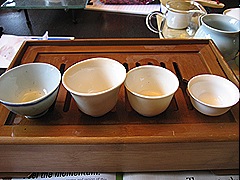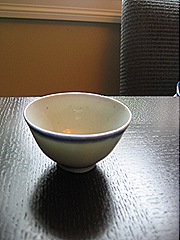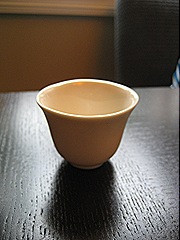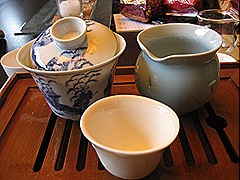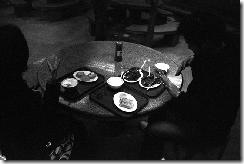He guaranteed that after 6 lessons, I'd be able to roast - with skill and competence - ANY oolong tea. How?
Hailing from an academic background, my potential instructor had spent several years uncovering the fundamentals of tea making and turning it into what he considered to be a foolproof method of instruction. Per his syllabus, we'd spend several classes learning about the plant's structure, growth and care. Then we'd learn the theories behind application of heat and the oxidation process. And then on the last class, we'd have a whole-day roasting session, after which he guaranteed that I'd be able to roast anything well. The guaranteed, foolproof method would be taught to me for a hefty sum; he brushed off the price by saying that no other person's instruction could give me the skills I needed in such a short amount of time.
"Hmm, one should be careful with whom they call teacher" said the Elder. "The price isn't cheap for 6 lessons. Also consider the likelihood that you'll be able to roast any type of tea in 6 lessons and after only doing it once."
I knew he was right, but I didn't have much time to learn and I really wanted to do theory and coursework. "But no one else can teach me the methods in such a short time" I protested. "Even if I learn a bit from you and my other teachers, all of my knowledge will be in pieces; I want formal education."
The Elder nodded. He understood what I wanted, but didn't want to come out and say directly that he thought it was a bad idea. "Maybe you should go and take one class and see what you think. Can you do that? Then, and this is important, ask him to try his tea. I know this guy, he has a lot of influence in certain parts of the tea world, but wasn't originally a tea maker. You can try his tea and see for yourself if he's worth learning from."
Taking his advice, I went to class for one day. It was in a specially-designed classroom within the instructor's house, which he had built to accommodate his tea lectures, tastings and possibly some areas to manufacture product as well. We spent several hours going over the tea plant and how oxidation occurs, why and how certain tastes develop, and the effects of nature and environmental factors on the quality of the product. No roasting, just theory. I took copious notes, though, and indeed found the class to be quite interesting.
As we neared the end of class, I asked if we could spend some time trying his tea. I wanted to see if he had skills in roasting that I would want to learn. I picked several teas - lightly oxidized Baozhong, a High Mountain varietal, and some other tea that I had never heard of (but was of moderate oxidation).
My instructor is a tea master in his own right, but likely not a master tea maker. His teas tasted "off," lacking any kind of distinctive characteristics. His oolongs tasted like the opposite of my past roasting experiments. Whereas my anxiety led me to add too much heat to my tea, his tea recipes led him to under-roast, preventing the true flavors from revealing themselves. On top of that, the tea base was marginal. Thanks professor, but that's all I needed to know that I wouldn't be coming back to class.
"You were right" I told the Elder. "I was incorrect to think that I could learn to roast everything in 10 days. I guess it's not a process of learning that can be rushed."
"Yup...we've been doing this for decades, every day, this is our life and our business. No one can learn it in 10 days and expect to be an expert."
I didn't find this particular teacher to have bad intentions, I believe that he honestly feels like he's got real skills. But delusion is a part of this business just as much as any other. I'm just happy that there are people who know better, like the Elder, who were around to pluck me away from those that can't provide true tea education to me.
Lesson learned: Pick your teachers wisely; it's also ok to have more than 1. A farmer once told me that good tea can only be made by good people, so without purity of heart, it's just hot water and burnt leaves.
